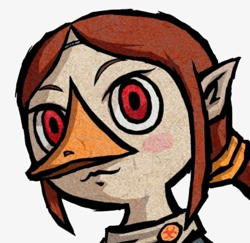[size="4"]To do this my graphics engine creates a VBO of a quad when initialized and upon rendering draws it using location/dimensions specified by a Polygon2D object.
[size="4"]When rendering 30 - 50 quads on actual hardware (LG Optimus V 670) the frame rate is around 5 - 10 and on the emulator it is 30 - 40.
[size="4"]Here's the code to give a better understanding
[size="4"]
public void CreateBuffers(GL10 gl)
{
GL11 gl11 = (GL11)gl;
mQuadBuffer = ByteBuffer.allocateDirect(QUAD2D.length * 4).order(ByteOrder.nativeOrder()).asFloatBuffer();
mQuadBuffer.put(QUAD2D, 0, QUAD2D.length);
mQuadBuffer.flip();
int[] buffer = new int[1];
gl11.glGenBuffers(1, buffer, 0);
mQuadVBOId = buffer[0];
gl11.glBindBuffer(GL11.GL_ARRAY_BUFFER, mQuadVBOId);
gl11.glBufferData(GL11.GL_ARRAY_BUFFER, mQuadBuffer.capacity() * 4, mQuadBuffer, GL11.GL_STATIC_DRAW);
}
public void draw(GL10 gl) {
GL11 gl11 = (GL11)gl;
Polygon2D poly;
int length = mPolygons.size();
gl.glEnableClientState(GL11.GL_VERTEX_ARRAY);
gl11.glBindBuffer(GL11.GL_ARRAY_BUFFER, mQuadVBOId);
gl11.glVertexPointer(2, GL11.GL_FLOAT, 0, 0);
for(int i = 0; i < length; i++)
{
poly = mPolygons.get(i);
gl11.glPushMatrix();
gl11.glTranslatef(poly.x, poly.y, 0);
gl11.glScalef(poly.width, poly.height, 0);
gl11.glDrawArrays(GL11.GL_LINE_LOOP, 0, 4);
gl11.glPopMatrix();
}
gl11.glBindBuffer(GL11.GL_ARRAY_BUFFER, 0);
gl.glDisableClientState(GL11.GL_VERTEX_ARRAY);
}[/font][font="Arial,"][size="4"]Am I doing something wrong, other OpenGL applications seem to run fine such as Replica Island.
[size="4"]I doubt this is useful but here are the specs http://pdadb.net/ind...vm670_optimus_v
[/font]
[font="Arial,"]This is all regarding OpenGL- ES 1.1 for android operating system 2.2[/font]




